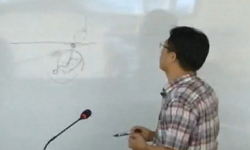<P>This study details the development of a large-area, three-dimensional (3D), plasmonic integrated electrode (PIE) system. Vertically aligned multiwalled carbon nanotube (VA-MWNT) electrodes are grown and populated with self-assembling silver n...
http://chineseinput.net/에서 pinyin(병음)방식으로 중국어를 변환할 수 있습니다.
변환된 중국어를 복사하여 사용하시면 됩니다.
- 中文 을 입력하시려면 zhongwen을 입력하시고 space를누르시면됩니다.
- 北京 을 입력하시려면 beijing을 입력하시고 space를 누르시면 됩니다.

 국가R&D연구논문
국가R&D연구논문
Self-Assembled Plasmonic Nanoparticles on Vertically Aligned Carbon Nanotube Electrodes via Thermal Evaporation
한글로보기https://www.riss.kr/link?id=A107554641
- 저자
- 발행기관
- 학술지명
- 권호사항
-
발행연도
2014
-
작성언어
-
- 주제어
-
등재정보
SCOPUS,SCIE
-
자료형태
학술저널
-
수록면
20423-20429(7쪽)
- 제공처
-
0
상세조회 -
0
다운로드
부가정보
다국어 초록 (Multilingual Abstract)
<P>This study details the development of a large-area, three-dimensional (3D), plasmonic integrated electrode (PIE) system. Vertically aligned multiwalled carbon nanotube (VA-MWNT) electrodes are grown and populated with self-assembling silver nanoparticles via thermal evaporation. Due to the geometric and surface characteristics of VA-MWNTs, evaporated silver atoms form nanoparticles approximately 15–20 nm in diameter. The nanoparticles are well distributed on VA-MWNTs, with a 5–10 nm gap between particles. The size and gap of the self-assembled plasmonic nanoparticles is dependent upon both the length of the MWNT and the thickness of the evaporated silver. The wetting properties of water of the VA-MWNT electrodes change from hydrophilic (∼70°) to hydrophobic (∼120°) as a result of the evaporated silver. This effect is particularly pronounced on the VA-MWNT electrodes with a length of 1 μm, where the contact angle is altered from an initial 8° to 124°. Based on UV–visible spectroscopic analysis, plasmonic resonance of the PIE systems occurs at a wavelength of approximately 400 nm. The optical behavior was found to vary as a function of MWNT length, with the exception of MWNT with a length of 1 μm. Using our PIE systems, we were able to obtain clear surface-enhanced Raman scattering (SERS) spectra with a detection limit of ∼10 nM and an enhancement factor of ∼10<SUP>6</SUP>. This PIE system shows promise for use as a novel electrode system in next-generation optoelectronics such as photovoltaics, light-emitting diodes, and solar water splitting.</P><P><B>Graphic Abstract</B>
<IMG SRC='http://pubs.acs.org/appl/literatum/publisher/achs/journals/content/aamick/2014/aamick.2014.6.issue-22/am505999e/production/images/medium/am-2014-05999e_0009.gif'></P><P><A href='http://pubs.acs.org/doi/suppl/10.1021/am505999e'>ACS Electronic Supporting Info</A></P>
동일학술지(권/호) 다른 논문
-
- American Chemical Society
- Lee, Seulyi
- 2014
- SCOPUS,SCIE
-
- American Chemical Society
- Choi, Yoon Suk
- 2014
- SCOPUS,SCIE
-
- American Chemical Society
- Park, Jinwoo
- 2014
- SCOPUS,SCIE
-
Amorphous Thieno[3,2-b]thiophene and Benzothiadiazole Based Copolymers for Organic Photovoltaics
- American Chemical Society
- Lee, Wonho
- 2014
- SCOPUS,SCIE
국가 R&D 연구 과제 정보
나노/마이크로 기술을 이용한 에너지 변환 효율 향상 (1345229142) / 2014 / BK21플러스사업(0.5) / 김창녕 / 경희대학교 / 교육부 / 145,920,500
나노융합기술사업단 (1345228863) / 2014 / BK21플러스사업(0.5) / 황윤회 / 부산대학교 / 교육부 / 237,356,500
나노/마이크로 기술을 이용한 에너지 변환 효율 향상 (1345229142) / 2014 / BK21플러스사업(0.5) / 김창녕 / 경희대학교 / 교육부 / 145,920,500
나노융합기술사업단 (1345228863) / 2014 / BK21플러스사업(0.5) / 황윤회 / 부산대학교 / 교육부 / 237,356,500




 ScienceON
ScienceON






